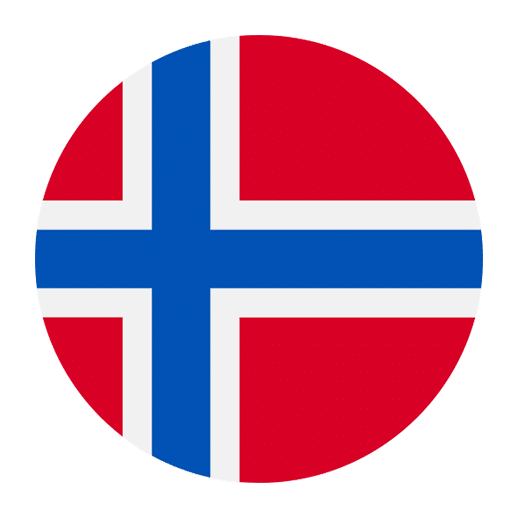When learning Norwegian, one of the key verbs you need to master is “to be.” Interestingly, there’s an archaic form of “to be” in Norwegian that adds a layer of historical depth and linguistic richness to your studies. Modern Norwegian primarily uses the verb “være” to mean “to be,” but in older texts, you might come across the verb “vere.” This article will delve into the nuances between “være” and “vere,” explore their usage, and provide context to help you understand and appreciate these verbs better.
The Modern Verb: Være
In contemporary Norwegian, the verb “være” is the standard way to express “to be.” This verb is crucial for constructing sentences related to identity, existence, states, and locations. Let’s break down its conjugation:
– Infinitive: være
– Present: er
– Past: var
– Past Participle: vært
– Present Participle: værende
Here are some examples of “være” in use:
1. Jeg er student. (I am a student.)
2. Du var hjemme i går. (You were home yesterday.)
3. Hun har vært i Norge før. (She has been to Norway before.)
4. Vi er værende i byen for helgen. (We are staying in the city for the weekend.)
Understanding “være” is fundamental for mastering Norwegian because it is used frequently in both spoken and written language. It also forms the basis for many compound verbs and expressions.
Usage in Present Tense
The present tense form “er” is used to describe a current state or ongoing action. For example:
– Han er trøtt. (He is tired.)
– Vi er glade. (We are happy.)
Usage in Past Tense
The past tense form “var” is used to describe a state or action that occurred in the past. For example:
– Hun var på skolen i går. (She was at school yesterday.)
– De var venner. (They were friends.)
The Archaic Verb: Vere
“Vere” is an older form of “to be” that you might encounter in classical literature, historical texts, or dialects. While it’s not commonly used in modern Norwegian, understanding “vere” can provide valuable insights into the language’s history and evolution.
The conjugation of “vere” is similar but has slight differences:
– Infinitive: vere
– Present: er or vere
– Past: var
– Past Participle: vort (archaic) or vært
– Present Participle: verande
Examples of “vere” in use from older texts:
1. “Han vere en klok mann.” (He is a wise man.)
2. “Vi vere i skogen.” (We are in the forest.)
Historical Context
“Vere” was commonly used in Old Norse and has survived in various dialects and older writings. In Old Norse, the verb “vera” was used, which evolved into “vere” and eventually “være” in modern Norwegian. This progression showcases the natural evolution of language over time.
Comparing Være and Vere
To illustrate the difference, let’s look at a few sentences side by side:
– Modern Norwegian: “Jeg er glad.” (I am happy.)
– Archaic/Old Norwegian: “Eg vere glad.” (I am happy.)
While the meaning remains the same, the form of the verb changes. Understanding these changes can help you appreciate the richness of the Norwegian language.
When to Use Være and Vere
In modern conversations and writing, always use “være.” However, if you are reading older texts, studying dialects, or delving into historical documents, you might come across “vere.” Recognizing this form can enhance your comprehension and appreciation of Norwegian’s linguistic heritage.
Reading Older Texts
If you are interested in Norwegian literature or historical documents, being aware of “vere” is essential. For example, in old folk tales, poetry, or legal documents, “vere” might appear. Understanding its meaning and usage will help you grasp the text’s content more effectively.
Dialectal Variations
Norwegian has many dialects, some of which still retain older forms of words, including “vere.” While traveling through different regions or engaging with speakers of various dialects, you might hear “vere” instead of “være.” Recognizing this variation can improve your communication skills and cultural understanding.
Practical Tips for Learning Være and Vere
To effectively learn and differentiate between “være” and “vere,” consider these practical tips:
1. Contextual Learning
Immerse yourself in both modern and historical contexts of the Norwegian language. Read contemporary news articles, watch TV shows, and listen to podcasts to master “være.” Additionally, explore old literature, historical documents, and dialectal recordings to familiarize yourself with “vere.”
2. Flashcards and Quizzes
Create flashcards with sentences using “være” and “vere.” Test yourself regularly to reinforce your understanding and recall. Online platforms and language learning apps often offer customizable flashcards and quizzes.
3. Practice with Native Speakers
Engage in conversations with native Norwegian speakers. Ask them about dialectal variations and historical forms like “vere.” Practicing with native speakers will provide real-world context and improve your fluency.
4. Study Linguistic History
Dive into the history of the Norwegian language. Understanding its evolution from Old Norse to modern Norwegian will give you a deeper appreciation of “være” and “vere.” Books, documentaries, and academic papers on Norwegian linguistics can be valuable resources.
5. Use Language Learning Tools
Leverage language learning tools such as Duolingo, Babbel, or Rosetta Stone. These platforms often incorporate historical and dialectal variations, helping you grasp the full spectrum of the language.
Conclusion
Understanding the difference between “være” and “vere” enriches your knowledge of the Norwegian language. While “være” is essential for modern communication, recognizing “vere” enhances your comprehension of historical texts and dialects. By immersing yourself in both contemporary and historical contexts, practicing with native speakers, and utilizing language learning tools, you can master these verbs and appreciate the linguistic depth of Norwegian.
Keep exploring, practicing, and enjoying the journey of learning Norwegian. The nuances you discover along the way will make your language skills more robust and your cultural understanding deeper. Happy learning!

